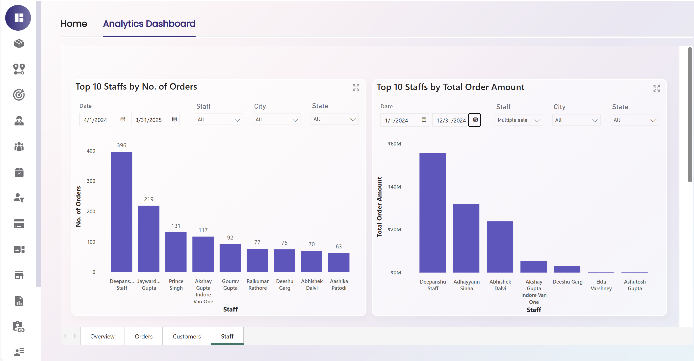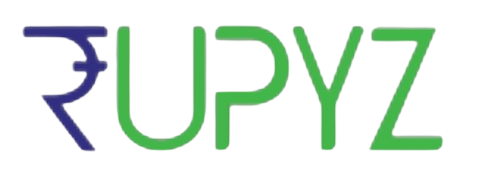Why Remote Teams Need Staff Tracking Solutions: Boosting Productivity and Accountability
Remote teams are common today but managing them can be tough. Remote tracking solutions help by monitoring work and improving teamwork. They make sure everyone stays productive and accountable, even when working in different places. This way, businesses can run smoothly and achieve their goals without losing flexibility.
The Rise of Remote Teams
Remote work has grown significantly, thanks to technology and changing workplace norms. Studies show a large increase in remote work since 2005, indicating its growing acceptance across industries. Flexibility and cost savings make remote work attractive to both employers and employees.
However, managing remote teams requires more than just communication tools. It needs a system for monitoring work, ensuring accountability, and keeping teams together. Staff tracking solutions offer the tools to manage remote teams well.
Understanding Staff Tracking Solutions
Staff tracking solutions include various tools for managing remote employee activities. These solutions often have features like:
Time Tracking:
Records time spent on tasks and projects accurately.
- Example: Automated timers that start and stop when an employee begins and finishes a task.
Activity Monitoring:
Tracks customer interactions including new order punching, payment status check, order dispatch status and idle time.
- Example: Screenshots taken at random intervals to ensure employees are focused on work-related activities.
Project Management:
Combines task management, progress tracking, and collaboration.
- Example: Dashboards that show task progress and deadlines.
Reporting and Analytics:
Gives insights into team productivity and project timelines.
- Example: Reports that show how much time is spent on different projects, helping managers allocate resources better.
GPS Tracking:
Monitors the location of field employees.
- Example: Real-time location tracking for delivery drivers to ensure routes are followed efficiently.
These solutions provide a full view of team activities, helping managers make smart decisions and improve how teams work.
Key Benefits of Staff Tracking Solutions for Remote Teams
1.Boosting Productivity:
Staff tracking solutions boost productivity by monitoring work hours and tasks, helping find inefficiencies.
Time tracking shows how long tasks take, revealing slow processes. Activity monitoring finds distractions that hurt productivity. Managers can then offer advice to help employees work better.
2. Ensuring Accountability:
Accountability is key for any team, but it’s harder in a remote setting. Staff tracking ensures employees are accountable by recording their activities and time spent.
This transparency prevents time theft and ensures employees meet deadlines. By promoting accountability, tracking solutions build trust within the remote team.
3. Streamlining Workflow:
Staff tracking solutions streamline workflows by centralizing task management and communication. They often work with other tools, like project management software, to create a smooth work environment.
By keeping everything in one place, these solutions save employees time and improve efficiency. This leads to better project outcomes and happier teams.
4. Data-Driven Insights:
Staff tracking provides data to understand team performance. By analyzing work hours and task completion, managers can find trends and areas for improvement.
These insights help make decisions about resources and training. If employees spend too long on a task, managers can offer training to improve efficiency.
5. Enhancing Communication:
Communication is vital for remote teams. Staff tracking solutions help by providing a clear view of team activities.
Knowing what colleagues are working on helps employees coordinate and avoid repeating work. Tracking solutions often include messaging and file sharing to help collaboration.
6. Time Management:
Staff tracking solutions help remote workers manage time by tracking hours and tasks. This helps employees spot time-wasting activities and focus on important work.
By setting goals and tracking progress, employees stay motivated. Time tracking also helps ensure they take breaks, which is important for avoiding burnout.
Addressing Concerns About Staff Tracking
It’s important to address concerns about privacy when using staff tracking. Some employees might feel monitored or distrusted.
To ease these concerns, communicate clearly about the purpose of tracking and how data will be used. Stress that the goal is to improve work, not micromanage. Also, ensure the solution respects privacy by only tracking work activities and avoiding personal data.

Choosing the Right Staff Tracking Solution
Choosing the right solution is key. Consider:
- Features: Make sure it has time tracking, activity monitoring, project management, and reporting.
- Integration: Check if it works with other tools your team uses.
- Ease of Use: Choose a solution that is easy for both managers and employees.
- Security: Ensure it protects sensitive data.
- Cost: Compare prices and find one that fits your budget.
Frequently Asked Questions & Simple Solutions
- Remote tracking tools allow managers to monitor employee attendance in real-time, ensuring that team members log in and out as expected. This visibility encourages accountability, as employees know their attendance is being recorded.
- By analyzing attendance data, remote tracking tools can help managers identify patterns of absenteeism, such as frequent late starts or recurring absences on specific days. This information enables businesses to address underlying issues proactively, whether they stem from personal challenges or workplace dissatisfaction.
- If an employee frequently takes unplanned leave, managers can intervene early and offer support, such as flexible scheduling or wellness programs.
- Remote tracking tools meticulously record daily activities, offering managers and team members a clear view of tasks, progress, and time spent. This transparency ensures everyone is aligned and reduces misunderstandings about workload distribution.
- Teams can share files, assign tasks, and maintain real-time communication across locations.
- By analyzing productivity trends, remote tracking helps schedule collaborative sessions during peak focus times, ensuring effective teamwork.
- Remote tracking tools provide real-time insights into workflows, helping employees stay focused and aligned with company goals. Engaged employees are more committed to their organizations, reducing turnover rates.
- Tracking systems allow employees to manage their schedules effectively, reducing stress and enabling better work-life balance. This flexibility increases job satisfaction and makes employees less likely to leave for other opportunities.
- By ensuring fair workload distribution and recognizing individual contributions, remote tracking fosters trust between employees and management. Employees who feel valued and understood are more likely to stay loyal to their organizations.
Conclusion
Staff tracking solutions are important for managing remote teams. By boosting productivity, ensuring accountability, streamlining work, providing data insights, and improving communication, these solutions help teams succeed. Addressing privacy concerns is vital, but the benefits outweigh the risks when used ethically. As remote work grows, staff tracking solutions will be key to the future of work.
The result? Improved sales efficiency, faster order processing, and increased customer satisfaction. In today’s competitive landscape, predictive analytics in field sales is not just a technological upgrade—it’s a strategic necessity for maximizing conversions and operational agility.
Transform your B2B Business
Take a DEMO of Rupyz Staff Management Software, to witness HOW remote tracking empowers businesses to create a supportive environment that encourages employee loyalty, reducing turnover costs and improving workforce stability.
Book A Demo

